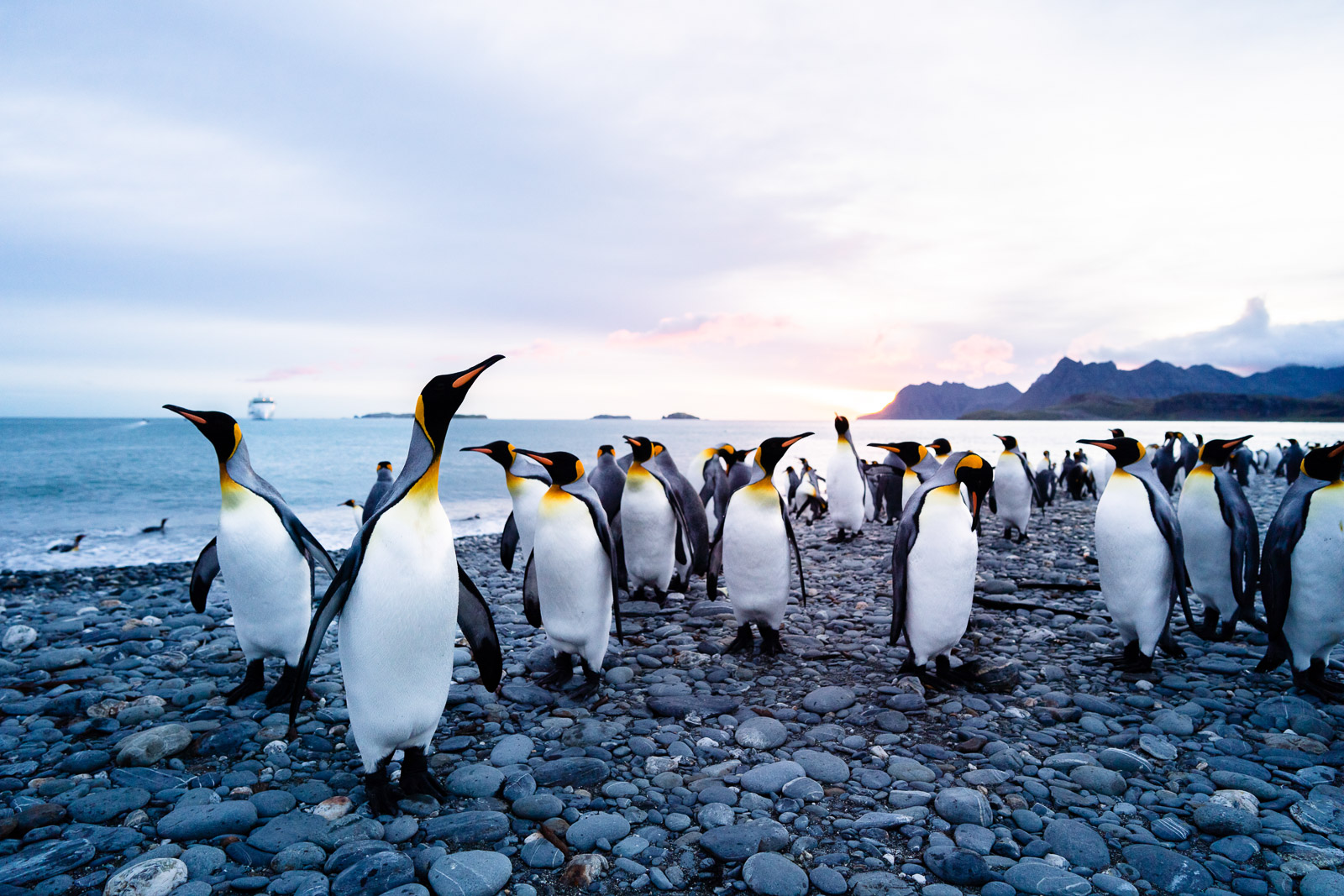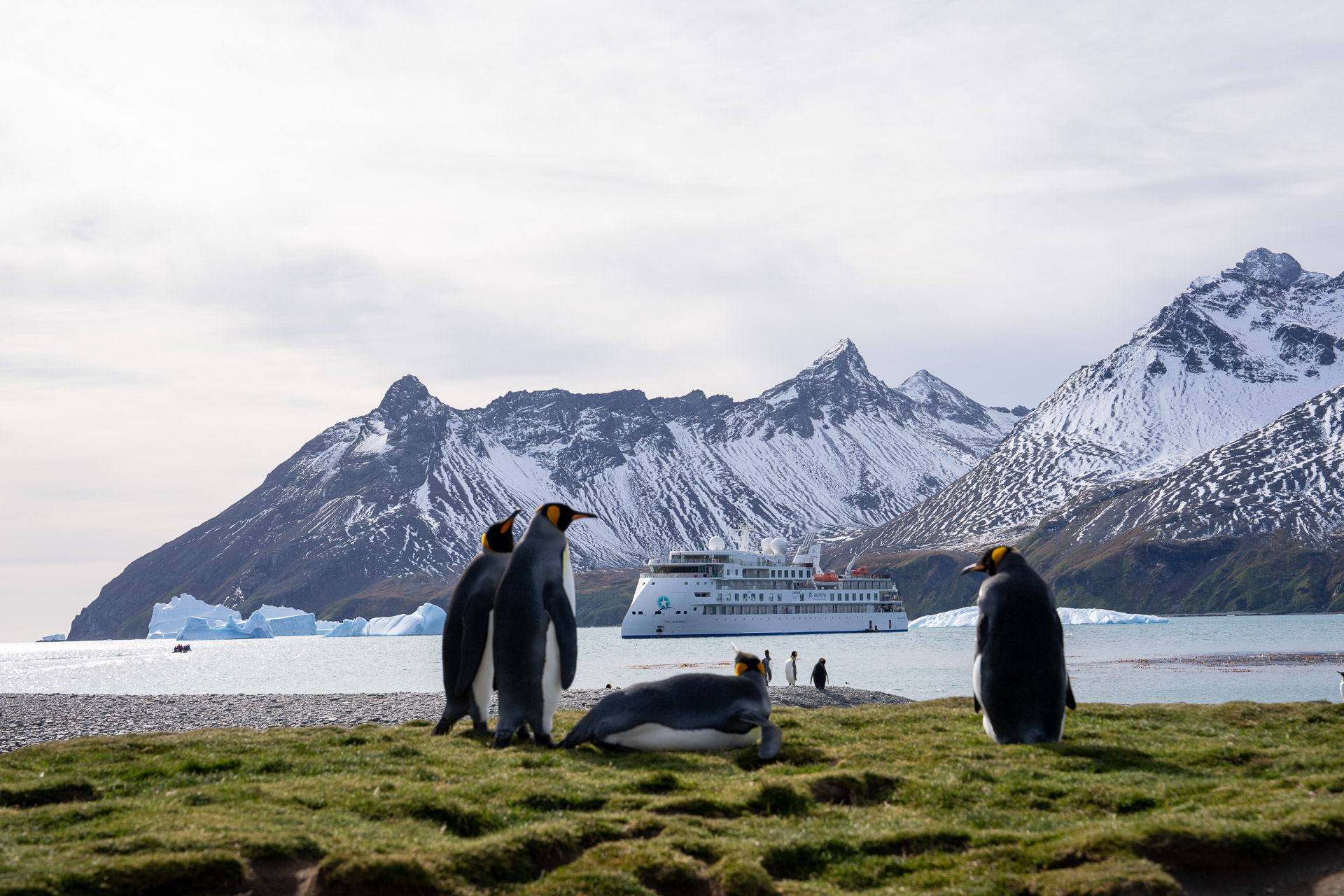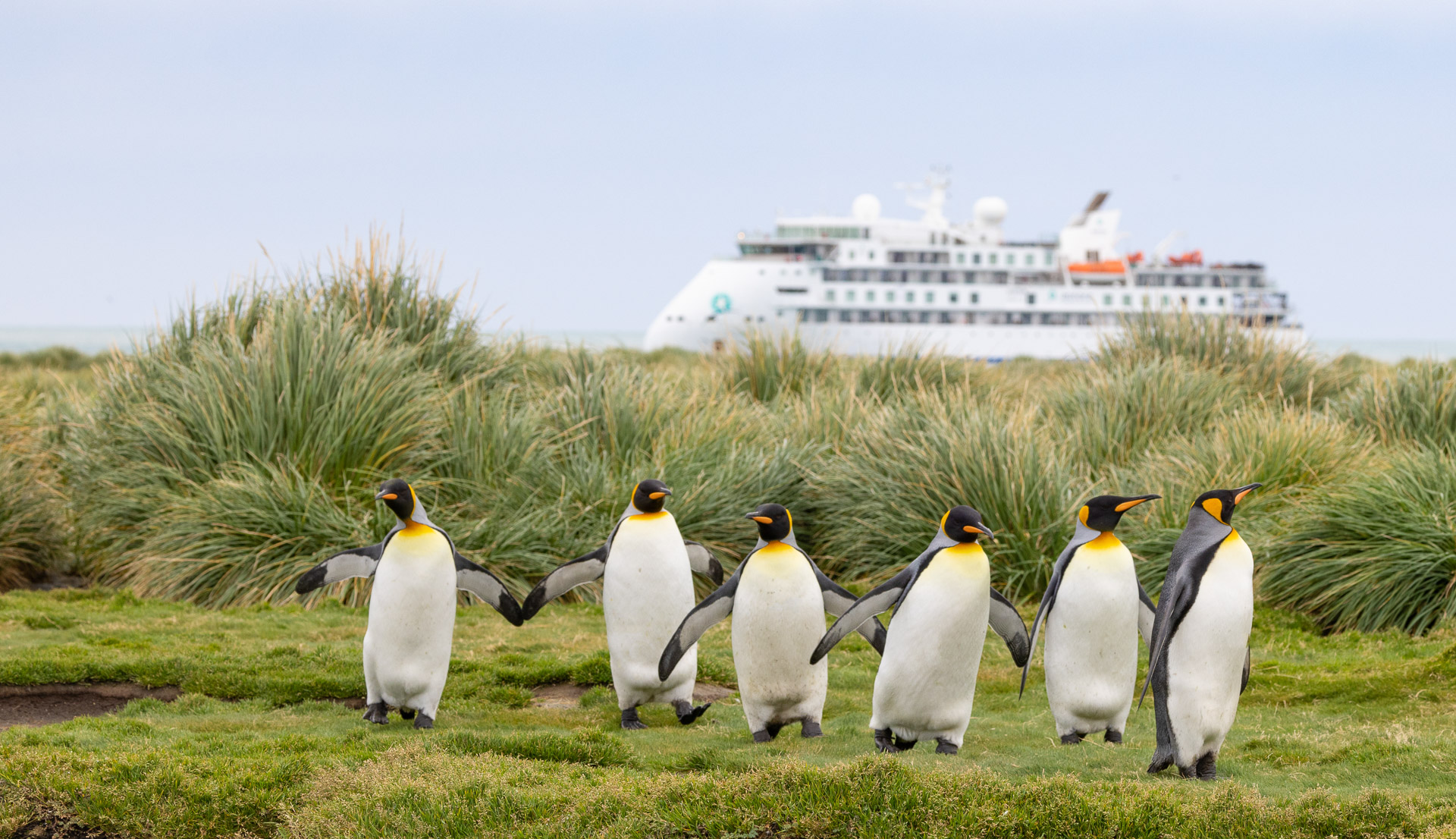On an adventure to Antarctica and the Subantarctic islands with Aurora Expeditions, there is one animal that almost everyone wants to see – penguins.
However, do you know the differences between the eight species of penguin which call these barren environments home?
In this latest wildlife fact file, we're giving you some insight into King penguins, the second largest species of penguin behind Emperor.

Read more: When is the best time to go to Antarctica?
Where do King penguins live?
In contrast to many penguin species, King penguins don't actually live on the Antarctic ice shelf.
Instead, they prefer the many Subantarctic islands in the Southern Ocean where there are flat sandy beaches without snow or ice. This provides King penguins with easy access to the sea and a slightly warmer climate for breeding.
South Georgia and the South Sandwich Islands is home to the world's largest breeding colony of King penguins, estimated to be around 450,000 pairs. Globally, the King penguin population stands at around 2.23 million breeding pairs – a number that continues to grow.
The waters off South Georgia offer many food sources for King penguins including fish, squid and krill. They can dive to around 50 metres and up to 100 times a day, a true show of the strength of this particular species.

Read more: Top things to photograph in South Georgia
How do you spot a King penguin?
The first thing that you'll notice on a King penguin is its fabulous colouring. Often referred to as the brightest of all penguin species, adult King penguins sport golden-orange markings on the sides of their heads, neck and upper breast. This colouring fades to a bright white down the belly.
The rest of the King penguin body is made up of darker colours including a silvery-grey back, black tail, head and wings – make sure you have your camera ready to capture these beautiful penguins!
Don't worry if you spot large brown-looking penguins amongst the King penguin colony on South Georgia, these are the unfledged chicks whose thick brown downs protect them from the harsh weather conditions. At the moment, they're not waterproof, so they need to group together tightly for warmth!
As mentioned above, King penguins are quite large compared to other species. Adult King penguins can grow to around 95cm high and weigh up to 15kg.
The life cycle of a King penguin
There is another special trait of the King penguin that is worth mentioning. Instead of building a nest or pile of stones to keep their eggs off the cold surface, King penguins opt for something a little different – their own feet.
When the single egg is laid, the male and female King penguins take turns to hold it on their feet, covering it with a flap of abdominal skin called the brood patch. Each parent holds the egg for around two weeks at a time over the course of seven weeks in total while the other goes to sea in search of food. Balancing the egg takes dedication, focus and unwavering support from both parents.
Read more: A brief history of South Georgia
Even when the chick hatches, this process continues for another six weeks until the chick can regulate its own body heat and is strong enough to stand on the beach for itself. It's at this point when thousands of fluffy brown King penguins can be seen standing together for warmth as their parents hunt for food. Described as 'crèches', these penguin chick groups can wait for months over the cold winter and lose up to 50 per cent of their body fat to survive.
Once the tough winter has passed, most chicks have developed their waterproof feathers and can enter the sea to hunt, and eventually breed back on the beach themselves. Unlike other penguin species, King penguins will also change partners each breeding season rather than staying loyal for life.
To learn more about the King penguin or book your Antarctic cruise, get in touch with the team at Aurora Expeditions today.


